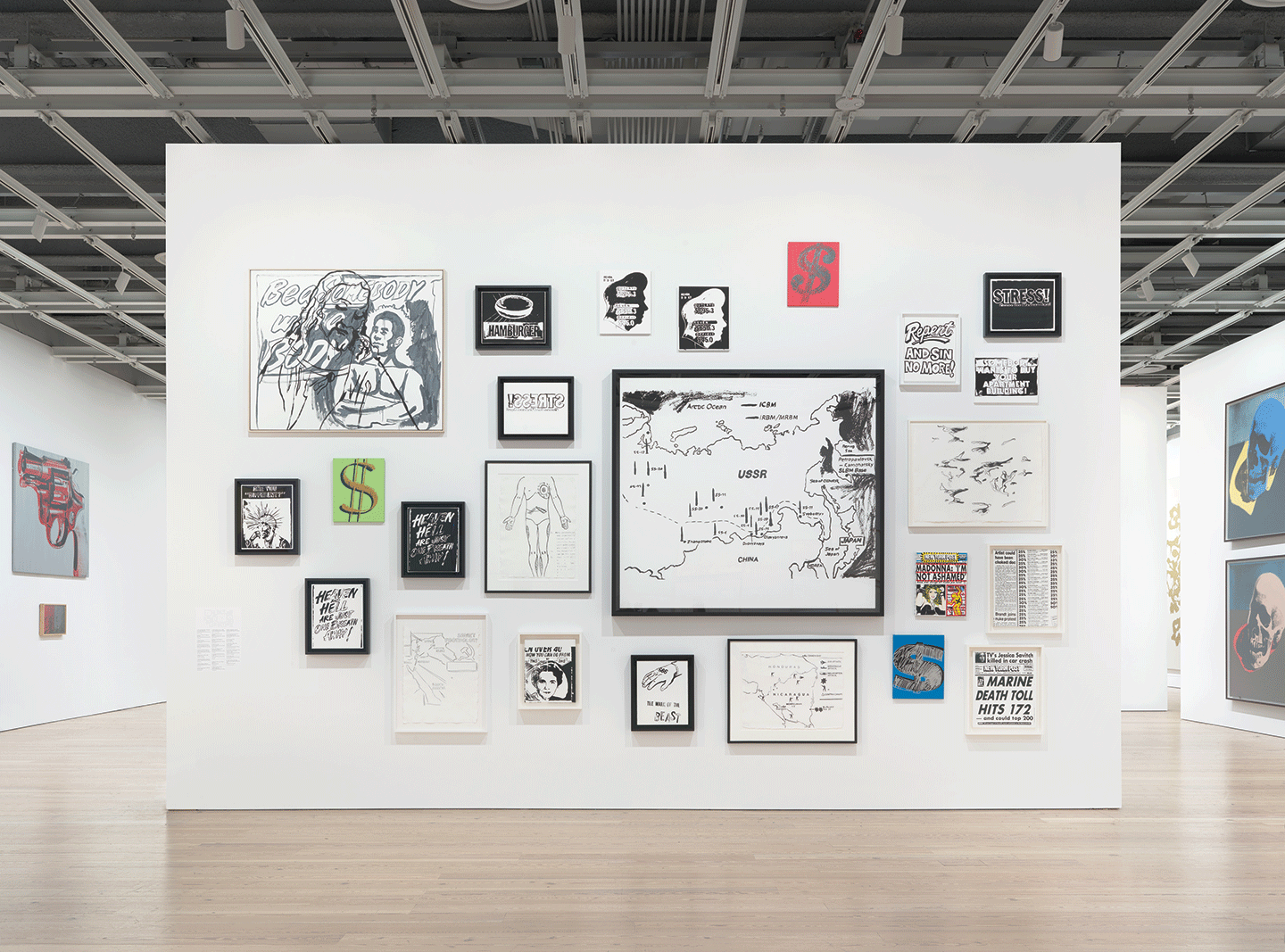« Reviews
Andy Warhol – From A to B and Back Again
Whitney Museum of American Art - New York
By Taliesin Thomas
The recent Andy Warhol retrospective at the Whitney Museum in New York, “Andy Warhol - From A to B and Back Again,” offered an outstanding vision of this larger-than-life American artist and the full range of his artistic prowess. If the From A to B part of the title was meant to encapsulate the many treasures to be found in this show, then I suggest the ‘A’ stands for all that was ‘Andy’ (of course) while the ‘B’ stands for ‘beyond’ since this exceptional exhibition did just that: it took us through Warhol’s art into a sublime beyond-ness and back.
This show was a stunning look at the evolution of an artists’ narrative, and Warhol’s story is, of course, peppered with the many familiar images and iconic symbols of his legacy. The exhibit included all of the wonderfully hackneyed semiotics of the Warhol dynasty: the bright hibiscus flower wallpaper, piles of Brillo boxes, a symphony of Campbell’s soup cans, dollar bill signs, oversized canvases with Coca Cola bottles and other memorable moments from his 1960’s to 1980’s output. Among these visions were also many rare sketches of lovely women’s shoes, ballpoint pen drawings of newspapers and unexpected ephemera that gave this exhibit a special sparkle. Two such examples included sketches titled Constipated Woman (1940s) and Female with Animal at Breast (1948-49), both works graphite on paper. Other delightful drawings included ladies with long earrings, sensitive hands and fingers, a penis wrapped with a bow and a male torso made of gold leaf.
One of the noticeable contrasts of this beautifully curated installation was the shift between sensitive depictions of women as demonstrated in his Wigs (1961) painting versus the shock of screen-prints with images of outright violence, suicides, car wrecks, electric chairs, police brutality, criminal mug shots and disastrous death scenes that haunt the heart. These works seemed like an outright comment on the contradictions of 1960s America and the reality-checks of the time. The devastation of the room that contained most of those brazen works was balanced by a humble gesture that spoke volumes: a small silkscreen of four bright Flowers (1964) hung high up in the corner, offering a sense of beauty and hope.

Installation view of “Andy Warhol – From A to B and Back Again,” at the Whitney Museum of American Art, New York (November 12, 2018 to March 31, 2019). Photo: Ron Amstutz. © 2018 The Andy Warhol Foundation for the Visual Arts, Inc. / Licensed by Artists Rights Society (ARS), New York.
Warhol’s foray into the grotesque, however, was overpowered by all the dazzling imagery that we love about his work: decorative elements, courageous color combinations, surface treatments, variations on a theme and cultural obsessions captured through his unique interpretation. Our Hollywood crushes never looks so bold-Elvis, Marilyn, Elizabeth Taylor, all ravishing in their flashy portraits, everywhere silver and gold. In addition to these familiar Warholian images of celebrity, a series of collaborations on canvas with Jean-Michel Basquiat vibrated the incredible zeitgeist of the era, and works such as a Paramount (1984-85) and Third Eye (1985) reflected their combined power and genius.
In 1963 Warhol famously stated: “I think everybody should be a machine,” and among my favorite encounters was a series of photos of Warhol vacuuming the carpet for a 1972 installation at Finch College Museum of Art, certainly looking the part of a man possessed by automaton. Indeed, the mechanized process of Warhol’s art making bears all the signs of productivity, experimentation and the magnetizing expanse of his oeuvre-including mediums such as new media, video, publishing, music, fashion and radical films. All of these vestiges remain a testimony to his unparalleled contribution to the history of aesthetic culture in the United States and beyond.
There was a distinct change of mood over the course of the show and works such as Sunset (1972) seem to foreshadowing the fading scene. The final room was an exalted ending to this incredible survey of Warhol’s creative exploration and also validated his experimentation with blurring, distorting and mediating the image into a reductive state: four monumental abstract canvases resonated with an esoteric energy that was at once macabre and enlightening, the last of which was a large painting of a gold design that seemed to embody the “A to B and Back Again” concept-there will never be an Again that was Andy, and going Back was the incredible journey offered by this unprecedented exhibition.
(November 12, 2018 - March 31, 2019)
Taliesin Thomas is an artist-philosopher, writer, educator, and aesthetician based in Brooklyn, NY.
Filed Under: Reviews



































Leave a Reply
You must be logged in to post a comment.